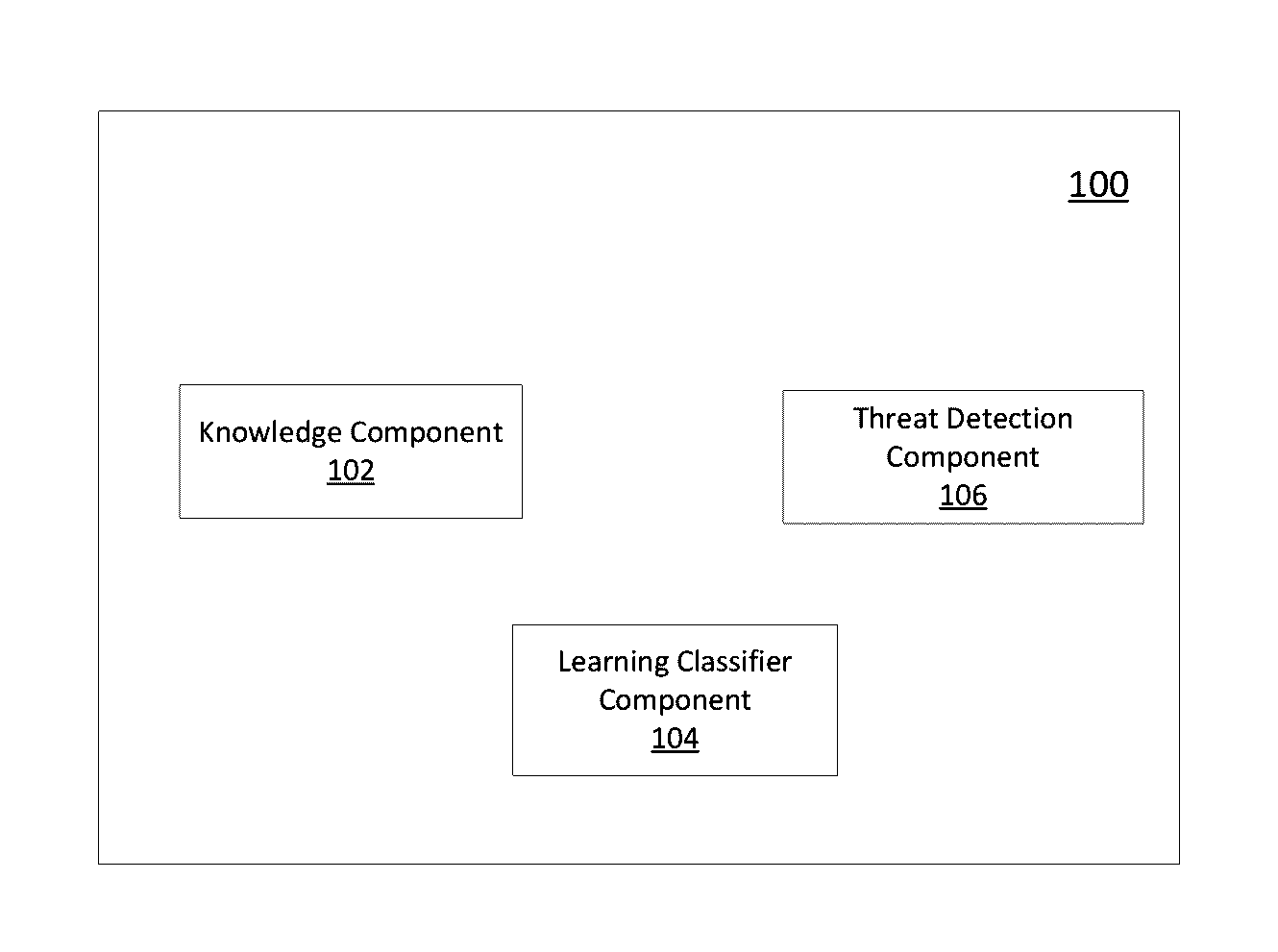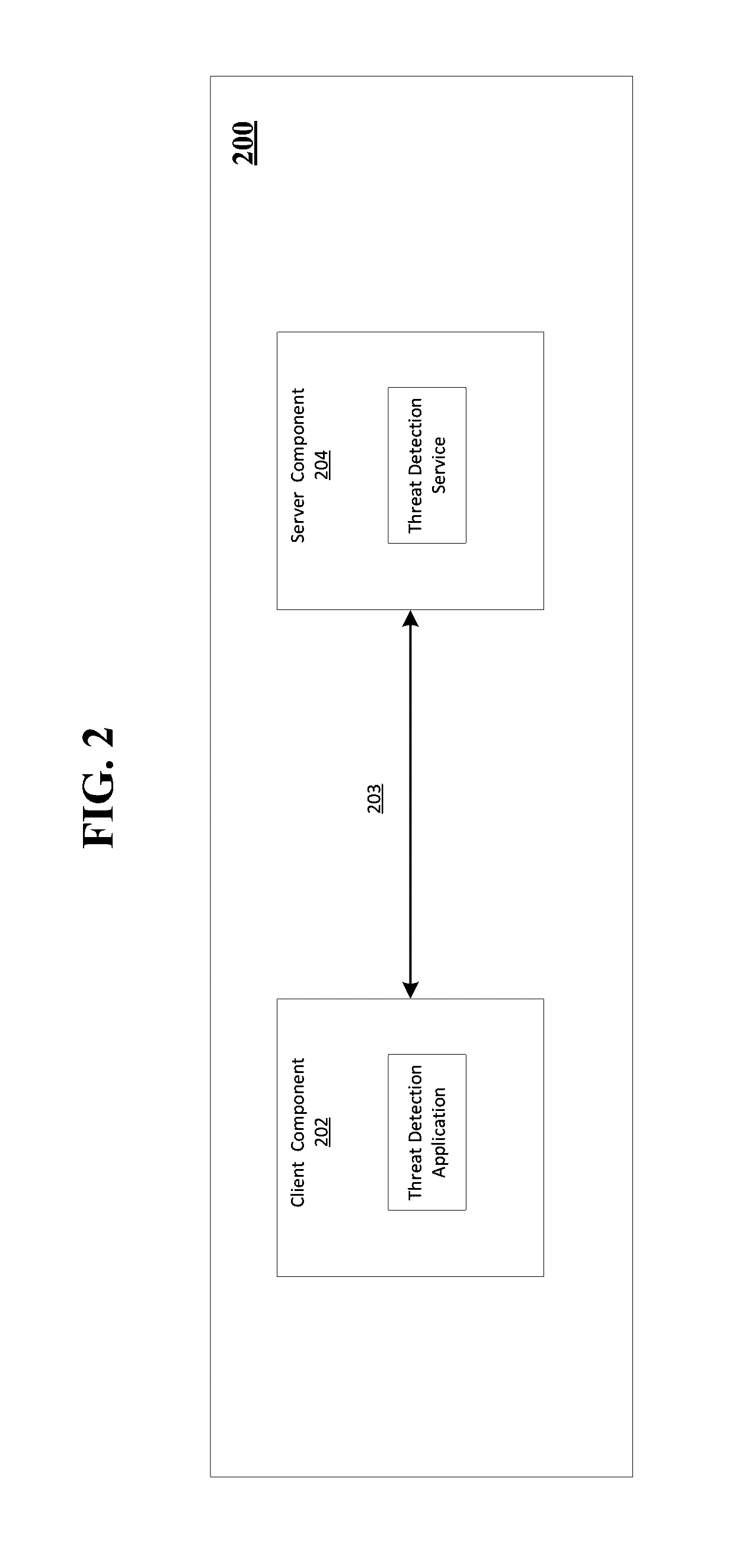Automatic threat detection of executable files based on static data analysis
a technology of static data analysis and automatic threat detection, applied in the direction of program code transformation, machine learning, kernel methods, etc., can solve the problem of not knowing if such distributed executable files are malicious or not, and achieve the effect of preventing the execution of executable files
- Summary
- Abstract
- Description
- Claims
- Application Information
AI Technical Summary
Benefits of technology
Problems solved by technology
Method used
Image
Examples
Embodiment Construction
[0009]Non-limiting examples of the present disclosure relate to the threat detection of executable files. The examples disclosed herein may also be employed to detect zero day threats from unknown executable files. However, one skilled in the art will recognize that the present disclosure is not limited to detection of executable files that may present zero day threats and can be applicable to any unknown file that is attempting to execute on a system (e.g., processing device). The present disclosure is able to detect whether an executable file is harmful or benign before the executable file is actually executed on a processing device. In examples, machine learning processing applies a classifier to evaluate an executable file based on static points data collected from the executable file. The classifier is trained from a collection of data comprising known malicious files, potentially unwanted files and benign files. The classifier is designed and trained such that it can handle en...
PUM
 Login to View More
Login to View More Abstract
Description
Claims
Application Information
 Login to View More
Login to View More - R&D
- Intellectual Property
- Life Sciences
- Materials
- Tech Scout
- Unparalleled Data Quality
- Higher Quality Content
- 60% Fewer Hallucinations
Browse by: Latest US Patents, China's latest patents, Technical Efficacy Thesaurus, Application Domain, Technology Topic, Popular Technical Reports.
© 2025 PatSnap. All rights reserved.Legal|Privacy policy|Modern Slavery Act Transparency Statement|Sitemap|About US| Contact US: help@patsnap.com



